DIY dumplings aren’t as difficult as you think. Cooking teacher Tony Tan shows you how
Dumplings are an activity as much as they are a food. So gather the crew and get wrapping – it doesn’t matter if the sizes don’t match or one is misshapen.
There are 14 dumpling recipes in Tony Tan’s Asian Cooking Class, the handsome new hardcover book from the experienced chef and cooking teacher.
It’s a fair bet that many cooks will marvel at the translucent skins of the chiu chow pork-and-daikon dumplings, salivate over the duck curry dumplings, and hanker for the mushroom wontons in curry oil (pictured below). But chances are they’ll then keep turning the pages, putting home-made dumplings in the too-hard basket rather than the bamboo steamer basket.
“No! That would be a shame,” says Tan, who has spent more than four decades cooking, eating, teaching and writing about the foods of Asia.
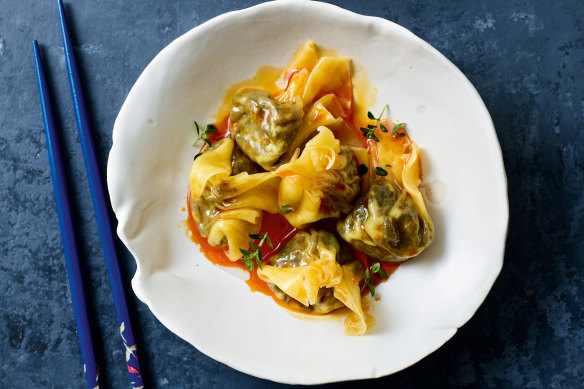
“My mission is to tell people that making dumplings is like opening a door, and when you walk through it, you see an Aladdin’s cave of wonders, a whole world of dumplings that’s almost infinite. That’s the beauty of it.”
But aren’t they a bit tricky to make? “It doesn’t matter if the sizes don’t match or one is misshapen,” he says. “Making dumplings is quite simply a joyful activity.” Fine then, let’s try it. But please, Tony Tan, tell us all your secrets.
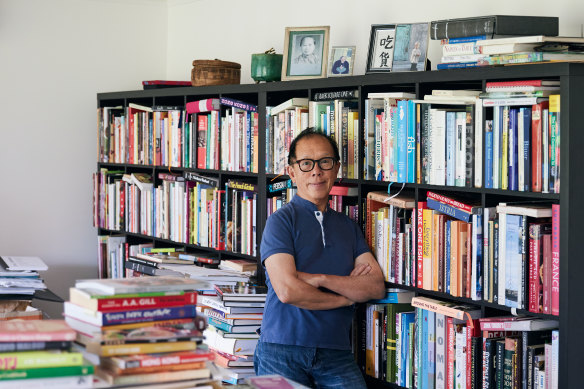
Get equipped
A pair of wooden chopsticks is handy for stirring liquid into flour as you make your dough. Chopsticks are faster and lighter than using a fork, and the flour won’t stick as much as it does to tines.
A dough scraper is handy to bring your dough together (if you make your dough, you do not have to) and keep your bench clean, as well as ensuring the proportions of liquid and flour are the same at the end as they were when you measured them at the beginning.
A special dumpling rolling pin is lighter and more manoeuvrable than a traditional European rolling pin, making it better for making dumpling wrappers. You can find them in most Asian grocers or Middle Eastern stores. Mine is about 2 centimetres in diameter and 30 centimetres long.

A bamboo steamer is good, but a steamer saucepan is fine too. Whichever you use, non-stick paper cut to size is handy, so it’s easy to remove the dumplings. Dumpling paper will have holes in it already, but you can also poke your own holes with a skewer, or fold the paper and use a hole punch, to ensure even steaming.
Understand your ingredients
Regular flour is fine for many dumpling wrappers, but if one of my recipes calls for a special flour – perhaps tapioca flour, glutinous rice flour or potato starch – there is a reason for it. Wheat starch isn’t the same as wheat flour – it’s a very soft product that has had the gluten removed, leaving only the starchy endosperm.
Some recipes – such as for bao dough – call for hot water to be mixed with the flour. It’s important to follow the recipe because it makes the dough tender.
Traditional dumpling fillings are made with pork, prawns, water chestnuts and so on. These days, many people are experimenting with fillings. My duck curry dumplings came about because I had leftover curry in the fridge, and my mushroom dumpling recipe was invented when I had a surprise vegetarian visitor. Look in your fridge: maybe something can go into a dumpling.
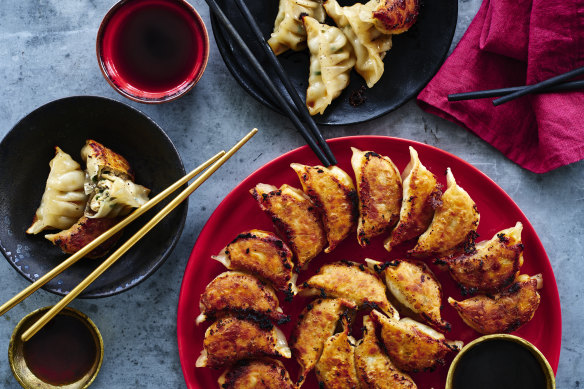
You’re allowed to buy wrappers
I don’t have an issue with buying dumpling skins but you should understand the different types. Wonton skins are a bit thinner, while gyoza wrappers – the Japanese equivalent of Chinese jiaozi – are thicker. It’s satisfying to make your own wrappers but the real joy is in the filling and shaping so, please, buy wrappers if that will help you start your dumpling journey.
Gather the crew
Dumplings are an activity as much as they are a food. It’s always so much better when you are making them with another person or a group so you can chatter and gossip until the cows come home. It’s group therapy, bringing people together, and you have something to eat at the end of it. That’s the beauty of it. I remember when we were kids, making wontons was a joyful activity, flour all over the table, without all the inhibitions that modern society has instilled in us.
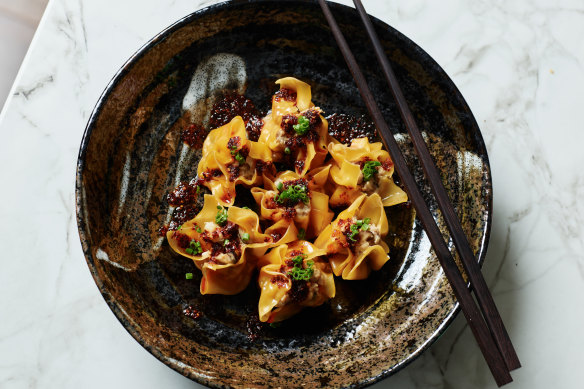
Start where?
Your dumpling 101 is siu mai or wontons. If you are making siu mai, you take your filling, put it in the middle of the pastry, tuck the edges in and leave the top exposed. How easy is that?
Wontons are easy, too. You can buy wonton pastries in a square shape. You put in your filling, fold one end to its opposite and pinch it to seal. Then you gather the other two sides and pinch them together, squeezing out the air as you go.
It’s handy if you have a small bowl of water next to you. Use your little finger to dip into the water, then rub the water on one edge – that helps to seal it. Make sure you have a paper towel or clean kitchen cloth to wipe your fingers off between dumplings.
- Tony Tan’s chicken and mushroom siu mai recipe (pictured above)
Freezing
You can freeze dumpling wrappers and folded dumplings in their raw state. Arrange dumplings in a container, placing baking paper between each layer, and store them in the coldest part of the freezer. They can be cooked from frozen.
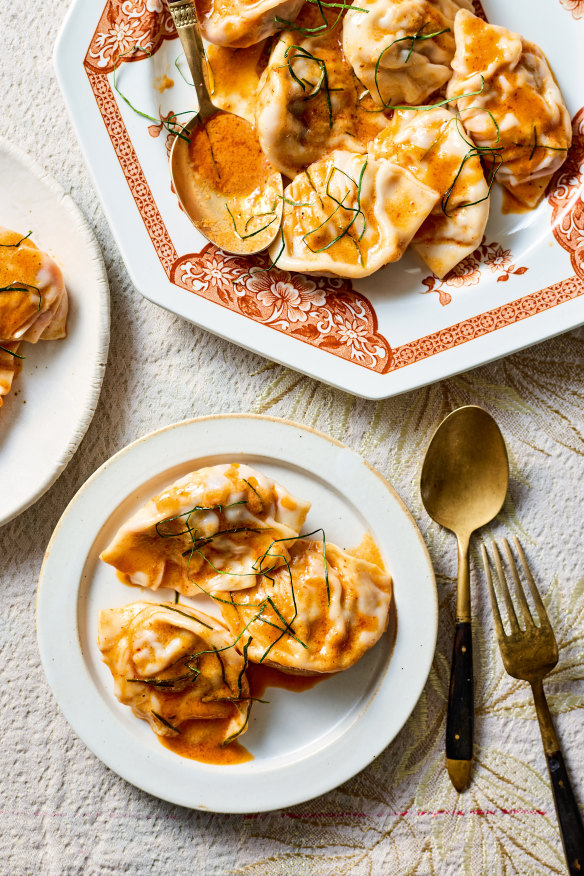
Even wonky dumplings teach you about dumplings
Dumplings are a craft and if you don’t learn that craft, you’ll never be able to appreciate the depth, skill and culture inherent in it. Even – or maybe especially – if your dumplings aren’t perfect, you’ll appreciate those you see as you walk through Chinatown, or those made in good restaurants. You understand the effort and skill that goes into them much more than if you simply consume them.
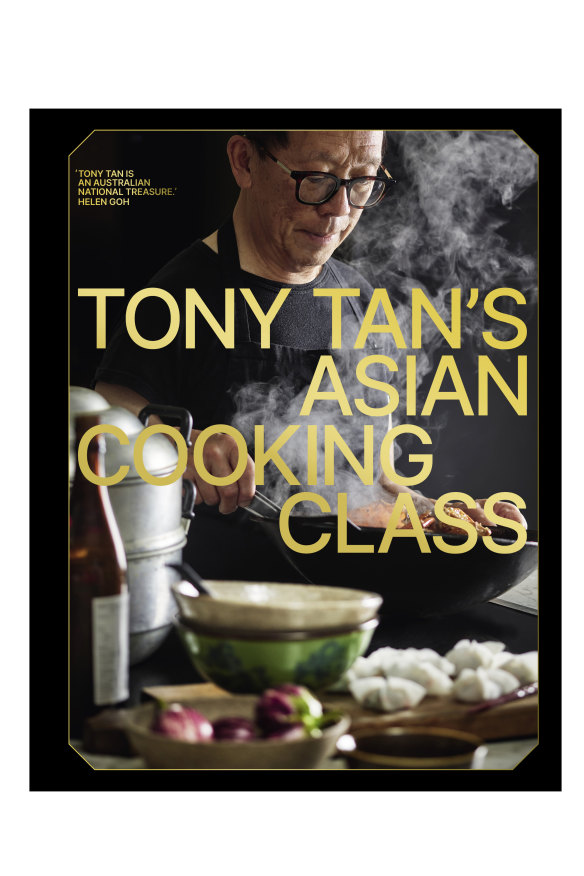
Tony Tan’s Asian Cooking Class by Tony Tan is published by Murdoch Books, RRP $59.99. Photography by Mark Roper.
Meet Tony Tan
In Melbourne, Tony Tan will appear at Essential Ingredient in Prahran on October 22 at 5pm. Bookings $20 + booking fee via theessentialingredient.com.au
He will also be in conversation with Dani Valent at Readings Carlton on October 24 at 6.30pm. Bookings free but essential via readings.com.au.
In Sydney, join him at Paski Vineria Popolare in Darlinghurst on Monday, October 28, for a four-course “Italy meets Asia” set menu inspired by Tan’s recipes. $100 a head (includes a signed copy of Tan’s cookbook; excludes drinks). Bookings via OpenTable
The best recipes from Australia's leading chefs straight to your inbox.
Sign up